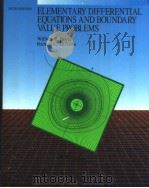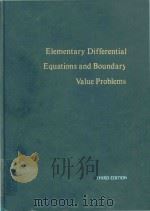《Elementary Matrices and Some Applications to Dynamics and Differential Equations》
| 作者 | 编者 |
|---|---|
| 出版 | At The University Press |
| 参考页数 | 416 |
| 出版时间 | 1938(求助前请核对) 目录预览 |
| ISBN号 | 无 — 求助条款 |
| PDF编号 | 812555948(仅供预览,未存储实际文件) |
| 求助格式 | 扫描PDF(若分多册发行,每次仅能受理1册) |
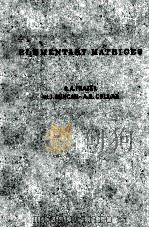
CHAPTER Ⅰ FUNDAMENTAL DEFINITIONS AND ELEMENTARY PROPERTIES1
1.1Preliminary Remarks1
1.2 Notation and Principal Types of Matrix1
1.3 Summation of Matrices and Scalar Multipliers4
1.4 Multiplication of Matrices6
1.5 Continued Products of Matrices9
1.6 Properties of Diagonal and Unit Matrices12
1.7 Partitioning of Matrices into Submatrioes13
1.8 Determinants of Square Matrices16
1.9 Singular Matrices,Degeneracy,and Rank18
1.10 Adjoint Matrices21
1.11 Reciprocal Matrices and Division22
1.12 Square Matrices with Null Product23
1.13 Reversal of Order in Products when Matrices are Transposed or Reciprocated25
1.14 Linear Substitutions26
1.15 Bilinear and Quadratic Forms28
1.16 Discriminants and One-Signed Quadratic Forms30
1.17 Special Types of Square Matrix33
CHAPTER Ⅱ POWERS OF MATRICES,SERIES,AND INFINITESIMAL CALCULUS37
2.1Introductory37
2.2 Powers of Matrices37
2.3 Polynomials of Matrices39
2.4 Infinite Series of Matrices40
2.5 The Exponential Function41
2.6 Differentiation of Matrices43
2.7 Differentiation of the Exponential Function45
2.8 Matrices of Differential Operators46
2.9 Change of the Independent Variables48
2.10 Integration of Matrices52
2.11 The Matrizant53
CHAPTER Ⅲ LAMBDA-MATRICES AND CANONICAL FORMS57
3.1Preliminary Remarks57
PART Ⅰ.Lambda-Matrices57
3.2Lambda-Matrices57
3.3 Multiplication and Division of Lambda-Matrices58
3.4 Remainder Theorems for Lambda-Matrices60
3.5 The Determinantal Equation and the Adjoint of a Lambda-Matrix61
3.6 The Characteristic Matrix of a Square Matrix and the Latent Roots64
3.7 The Cayley-Hamilton Theorem70
3.8 The Adjoint and Derived Adjoints of the Characteristic Matrix73
3.9 Sylvester's Theorem78
3.10 Confiuent Form of Sylvester's Theorem83
PART Ⅱ. Canonical Forms87
3.11Elementary Operations on Matrices87
3.12 Equivalent Matrices89
3.13 A Canonical Form for Square Matrices of Rank r89
3.14 Equivalent Lambda-Matrices90
3.15 Smith's Canonical Form for Lambda-Matrices91
3.16 Collineatory Transformation of a Numerical Matrix to a Canonical Form93
CHAPTER Ⅳ MISCELLANEOUS NUMERICAL METHODS96
4.1Range of the Subjects Treated96
PART Ⅰ.Determinants,Reciprocal and Adjoint Matrices,and Systems of Linear Algebraic Equations96
4.2Preliminary Remarks96
4.3 Triangular and Related Matrices97
4.4 Reduction of Triangular and Related Matrices to Diagonal Form102
4.5 Reciprocals of Triangular and Related Matrices103
4.6 Computation of Determinants106
4.7 Computation of Reciprocal Matrices108
4.8 Reciprocation by the Method of Postmultipliers109
4.9 Reciprocation by the Method of Submatrices112
4.10 Reciprocation by Direct Operations on Rows119
4.11 Improvement of the Accuracy of an Approximate Reciprocal Matrix120
4.12 Computation of the Adjoint of a Singular Matrix121
4.13 Numerical Solution of Simultaneous Linear Algebraic Equations125
PART Ⅱ.High Powers of a Matrix and the Latent Soots133
4.14Preliminary Summary of Sylvester's Theorem133
4.15 Evaluation of the Dominant Latent Roots from the Limiting Form of a High Power of a Matrix134
4.16 Evaluation of the Matrix Coefficients Z for the Dominant Roots138
4.17 Simplified Iterative Methods140
4.18 Computation of the Non-Dominant Latent Roots143
4.19 Upper Bounds to the Powers of a Matrix145
PART Ⅲ.Algebraic Equations of General Degree148
4.20Solution of Algebraic Equations and Adaptation of Aitken's Formulae148
4.21 General Remarks on Iterative Methods150
4.22 Situation of the Roots of an Algebraic Equation151
CHAPTER Ⅴ LINEAR ORDINARY DIFFERENTIAL EQUATIONS WITH CONSTANT COEFFICIENTS156
PART Ⅰ.General Properties156
5.1Systems of Simultaneous Differential Equations156
5.2 Equivalent Systems158
5.3 Transformation of the Dependent Variables159
5.4 Triangular Systems and a Fundamental Theorem160
5.5 Conversion of a System of General Order into a First-Order System162
5.6 The Adjoint and Derived Adjoint Matrices165
5.7 Construction of the Constituent Solutions167
5.8 Numerical Evaluation of the Constituent Solutions172
5.9 Expansions in Partial Fractions176
PART Ⅱ.Construction of the Complementary Function and of a Particular Integral178
5.10The Complementary Function178
5.11 Construction of a Particular Integral183
CHAPTER Ⅵ LINEAR ORDINARY DIFFERENTIAL EQUATIONS WITH CONSTANT COEFFICIENTS (continued)186
PART Ⅰ.Boundary Problems186
6.1Preliminary Remarks186
6.2 Characteristic Numbers187
6.3 Notation for One-Point Boundary Problems188
6.4 Direct Solution of the General One-Point Boundary Problem191
6.5 Special Solution for Standard One-Point Boundary Problems195
6.6 Confluent Form of the Special Solution198
6.7 Notation and Direct Solution for Two-Point Boundary Problems200
PART Ⅱ.Systems of First Order202
6.8Preliminary Remarks202
6.9 Special Solution of the General First-Order System,and its Connection with Heaviside's Method203
6.10 Determinantal Equation,Adjoint Matrices,and Modal Columns for the Simple First-Order System205
6.11 General,Direct,and Special Solutions of the Simple First-Order System206
6.12 Power Series Solution of Simple First-Order Systems209
6.13 Power Series Solution of the Simple First-Order System for a Two-Point Boundary Problem211
CHAPTER Ⅶ NUMERICAL SOLUTIONS OF LINEAR ORDINARY DIFFERENTIAL EQUATIONS WITH VARIABLE COEFFICIENTS212
7.1Range of the Chapter212
7.2 Existence Theorems and Singularities212
7.3 Fundamental Solutions of a Single Linear Homogeneous Equation214
7.4 Systems of Simultaneous Linear Differential Equations215
7.5 The Peano-Baker Method of Integration217
7.6 Various Properties of the Matrizant218
7.7 A Continuation Formula219
7.8 Solution of the Homogeneous First-Order System of Equations in Power Series222
7.9 Collocation and Galerkin's Method224
7.10 Examples of Numerical Solution by Collocation and Galerkin's Method228
7.11 The Method of Mean Coefficients232
7.12 Solution by Mean Coefficients:Example No.1233
7.13 Example No.2237
7.14 Example No.3240
7.15 Example No.4243
CHAPTER Ⅷ KINEMATICS AND DYNAMICS OF SYSTEMS246
PART Ⅰ.Frames of Reference and Kinematics246
8.1Frames of Reference246
8.2 Change of Reference Axes in Two Dimensions247
8.3 Angular Coordinates of a Three-Dimensional Moving Frame of Reference260
8.4 The Orthogonal Matrix of Transformation261
8.5 Matrices Representing Finite Rotations of a Frame of Reference261
8.6 Matrix of Transformation and Instantaneous Angular Velocities Expressed in Angular Coordinates266
8.7 Components of Velocity and Acceleration266
8.8 Kinematic Constraint of a Rigid Body260
8.9 Systems of Rigid Bodies and Generalised Coordinates260
PART Ⅱ.Statics and Dynamics of Systems262
8.10Virtual Work and the Conditions of Equilibrium262
8.11 Conservative and Non-Conservative Fields of Force263
8.12 Dynamical Systems266
8.13 Equations of Motion of an Aeroplane267
8.14 Lagrange's Equations Of Motion of a Holonomous System269
8.15 Ignoration of Coordinates272
8.16 The Generalised Components of Momentum and Hamilton's Equations274
8.17 Lagrange's Equations with a Moving Frame of Reference277
CHAPTER Ⅸ SYSTEMS WITH LINEAR DYNAMICAL EQUATIONS280
9.1Introductory Remarks280
9.2 Disturbed Motions280
9.3 Conservative System Disturbed from Equilibrium281
9.4 Disturbed Steady Motion of a Conservative System with Ignorable Coordinates282
9.5 Small Motions of Systems Subject to Aerodynamical Forces283
9.6 Free Disturbed Steady Motion of an Aeroplane284
9.7 Review of Notation and Terminology for General Linear Systems288
9.8 General Nature of the Constituent Motions289
9.9 Modal Columns for a Linear Conservative System291
9.10 The Direct Solution for a Linear Conservative System and the Normal Coordinates295
9.11 Orthogonal Properties of the Modal Columns and Rayleigh's Principle for Conservative Systems299
9.12 Forced Oscillations of Aerodynamical Systems302
CHAPTER Ⅹ ITERATIVE NUMERICAL SOLUTIONS OF LINEAR DYNAMICAL PROBLEMS308
10.1Introductory308
PART Ⅰ.Systems with Damping Forces Absent308
10.2 Remarks on the Underlying Theory308
10.3Example No.1:Oscillations of a Triple Pendulum310
10.4 Example No.2:Torsional Oscillations of a Uniform Cantilever314
10.5 Example No.3:Torsional Oscillations of a Multi-Cylinder Engine316
10.6 Example No.4:Flexural Oscillations of a Tapered Beam318
10.7 Example No.5:Symmetrical Vibrations of an Annular Membrane320
10.8 Example No.6:A System with Two Equal Frequencies322
10.9 Example No.7:The Static Twist of an Aeroplane Wing under Aerodynamical Load325
PART Ⅱ.Systems with Damping Forces Present327
10.10Preliminary Remarks327
10.11 Example:The Oscillations of a Wing in an Airstream328
CHAPTER Ⅺ DYNAMICAL SYSTEMS WITH SOLID FRICTION332
11.1Introduction332
11.2 The Dynamical Equations336
11.3 Various Identities336
11.4 Complete Motion when only One Coordinate is Frictionally Constrained339
11.5 Illustrative Treatment for Ankylotic Motion344
11.6 Steady Oscillations when only One Coordinate is Frictionally Constrained345
11.7 Discussion of the Conditions for Steady Oscillations348
11.8 Stability of the Steady Oscillations350
11.9 A Graphical Method for the Complete Motion of Binary Systems354
CHAPTER Ⅻ ILLUSTRATIVE APPLICATIONS OF FRICTION THEORY TO FLUTTER PROBLEMS358
12.1Introductory358
PART Ⅰ.Aeroplane No.1362
12.2Numerical Data362
12.3 Steady Oscillations on Aeroplane No.1 at V =260.(Rudder Frictionally Constrained)363
12.4 Steady Oscillations on Aeroplane No.1 at Various Speeds.(Rudder Frictionally Constrained)367
12.5 Steady Oscillations on Aeroplane No.1.(Fuselage Frictionally Constrained)369
PART Ⅱ.Aeroplane No.2369
12.6Numerical Data369
12.7 Steady Oscillations on Aeroplane No.2.(Rudder Frictionally Constrained)370
12.8 Steady Oscillations on Aeroplane No.2.(Fuselage Frictionally Constrained)372
12.9 Graphical Investigation of Complete Motion on Aeroplane No.2 at V = 230.(Rudder Frictionally Constrained)372
PART Ⅲ.Aeroplane No.3380
1210 Aeroplane No.3380
CHAPTER ⅩⅢ PITCHING OSCILLATI0NS OF A FRICTIONALLY CONSTRAINED AEROFOIL382
13.1Preliminary Remarks382
PART Ⅰ.The Test System and its Design383
13.2Description of the Aerofoil System383
13.3 Data Relating to the Design of the Test System384
13.4 Graphical Interpretation of the Criterion for Steady Oscillations387
13.5 Alternative Treatment Based on the Use of Inertias as Parameters389
13.6 Theoretical Behaviour of the Test System392
PART Ⅱ.Experimental Investigation395
13.7Preliminary Calibrations of the Actual Test System395
13.8 Observations of Frictional Oscillations395
13.9 Other Oscillations Exhibited by the Test System398
List of References399
List of Authors Cited403
Index404
1938《Elementary Matrices and Some Applications to Dynamics and Differential Equations》由于是年代较久的资料都绝版了,几乎不可能购买到实物。如果大家为了学习确实需要,可向博主求助其电子版PDF文件(由 1938 At The University Press 出版的版本) 。对合法合规的求助,我会当即受理并将下载地址发送给你。
高度相关资料
-
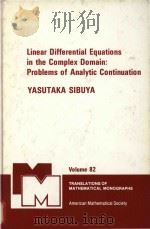
- Invariant imbedding and its applications to ordinary differential equations an introduction
- 1990 American Mathematical Society
-
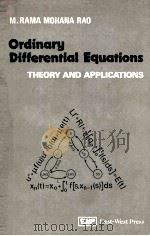
- Ordinary Differential Equations Theory And Applications
- 1980 Affiliated East West Press Pvt Ltd.
-
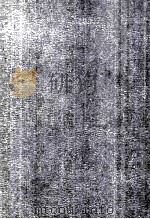
- Partial Differential Equations of First Order and Their Applications To Physics
- 1999 World Scientific Publishing Co.Pte.Ltd.
-
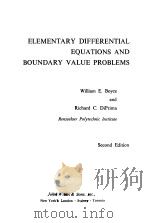
- ELEMENTARY DIFFERENTIAL EQUATIONS AND BOUNDARY VALUE PROBLEMS
- 1965 JOHN WILEY & SONS INC
-
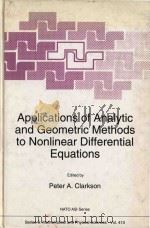
- Applications of analytic and geometric methods to nonlinear differential equations
- 1993 Kluwer Academic Publishers
-
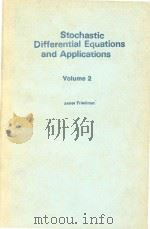
- Stochastic differential equations and applications Volume 2
- 1976 Academic Press
-
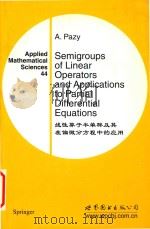
- Semigroups of linear operators and applications to partial differential equations
- 1983 SpringerVerlag
-
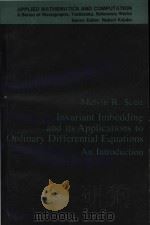
- Invariant imbedding and its applications to ordinary differential equations : an introduction
- 1973 Addison-Wesley
-
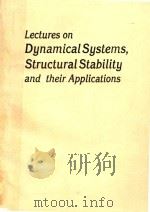
- Delay differential equations with applications in population dynamics
- 1993 Academic Press
-
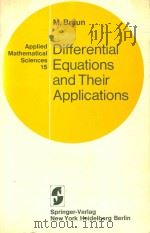
- Differential equations and their applications
- 1975 Springer-Verlag
-
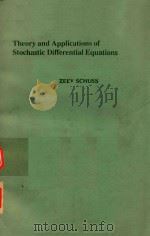
- THEORY AND APPLICATIONS OF STOCHASTIC DIFFERENTIAL EQUATIONS
- 1980 JOHN WILEY & SONS
-
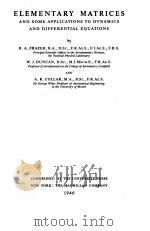
- ELEMENTARY MATRICES AND SOME APPLICATIONS DYNAMICS AND DIFFERENTIAL EQUATIONS
- 1946 AT THE UNIVERSITY PRESS
提示:百度云已更名为百度网盘(百度盘),天翼云盘、微盘下载地址……暂未提供。➥ PDF文字可复制化或转WORD
